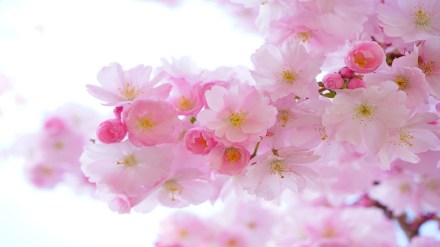Do you know there are some flowers that can be eaten? Edible flowers have been a part of culinary traditions around the world for centuries, adding color, flavour, and a touch of elegance to various dishes. While these blooms are often celebrated for their aesthetic appeal, it’s essential to consider both the potential benefits and side effects associated with their consumption.
Edible flowers come in a diverse array of colors, flavors, and textures, each offering a unique culinary experience.
Here are some popular types of edible flowers:
Nasturtiums:
Flavour: Peppery and slightly tangy.
Use: Both the leaves and flowers are edible. They add a vibrant color to salads and are often used as a garnish.
Roses:
Flavour: Floral and sweet.
Use: Petals can be used to make syrups, jams, or desserts. They are also commonly used in salads.
Lavender:
Flavour: Fragrant and slightly sweet.
Use: Often used in baking, desserts, and teas. Lavender pairs well with chocolate and lemon-flavored dishes.
Calendula:
Flavour: Mildly tangy, with a hint of spice.
Use: Petals can be added to salads, soups, or used to color and flavor rice. Calendula is sometimes referred to as “poor man’s saffron.”
Violets:
Flavour: Sweet and floral.
Use: Violets are often crystallized for cake decoration or added to salads for a burst of color. They can also be used to make jellies and syrups.
Chrysanthemums:
Flavour: Bitter and slightly floral.
Use: Popular in Asian cuisine, chrysanthemum petals are used to make tea. They can also be added to salads.
Dandelions:
Flavour: Slightly bitter.
Use: Both the flowers and young leaves are edible. They can be added to salads, used in fritters, or brewed into a tea.
Hibiscus:
Flavour: Tart and cranberry-like.
Use: Dried hibiscus flowers are commonly used to make herbal teas. They can also be added to salads or used as a garnish.
Borage:
Flavour: Mild cucumber-like taste.
Use: Both the flowers and leaves are edible. Borage flowers are often used in salads or as a garnish for cold soups.
Marigolds:
Flavour: Citrusy and slightly spicy.
Use: Petals can be used in salads, rice dishes, or as a colorful addition to soups. Marigolds are also used to make a saffron-like dye.
When incorporating edible flowers into your dishes, it’s essential to ensure they are free from pesticides and safe for consumption. Additionally, start with small amounts to gauge personal sensitivities or allergies.
What are the Benefits of Edible Flowers?
- Nutritional Value: Many edible flowers are rich in vitamins, minerals, and antioxidants. For example, nasturtiums are high in vitamin C, while violets contain vitamins A and C. These nutrients contribute to overall health and well-being.
- Aesthetic Appeal: Edible flowers elevate the visual appeal of dishes, making them more enticing and appetizing. Chefs and home cooks alike use them as a garnish to enhance the presentation of salads, desserts, and main courses.
- Unique Flavors: Each edible flower imparts a distinct flavor profile, ranging from sweet and floral to peppery and citrusy. Experimenting with these flavors allows for creative and innovative culinary experiences.
- Cultural Significance: In various cultures, edible flowers hold symbolic and cultural significance. For instance, in Asian cuisine, chrysanthemums are used to make tea, symbolizing longevity and vitality.
What are the Side Effects of Edible Flowers?
- Allergic Reactions: Some individuals may be allergic to certain edible flowers, leading to adverse reactions such as skin rashes, itching, or even more severe symptoms. It’s crucial to be aware of potential allergies before incorporating these blooms into your diet.
- Toxic Varieties: Not all flowers are safe to eat. Some can be toxic and cause digestive issues, nausea, or more severe health problems. It’s essential to accurately identify edible flowers and avoid consuming any that may be harmful.
- Pesticide Exposure: Edible flowers purchased from non-organic sources may carry pesticide residues. Thoroughly washing these blooms or choosing organic options can help reduce the risk of pesticide exposure.
- Individual Sensitivity: Just like any other food, individual sensitivities can vary. Some people may experience gastrointestinal discomfort or mild digestive issues after consuming certain edible flowers.
In conclusion, incorporating edible flowers into your diet can be a delightful and healthful experience, provided you exercise caution and ensure the flowers are safe for consumption. Before indulging in these floral delicacies, it’s wise to research and, if necessary, consult with a healthcare professional, especially if you have known allergies or sensitivities. With careful consideration, edible flowers can be a beautiful and flavorful addition to your culinary repertoire, enhancing both the visual and gustatory aspects of your meals.
